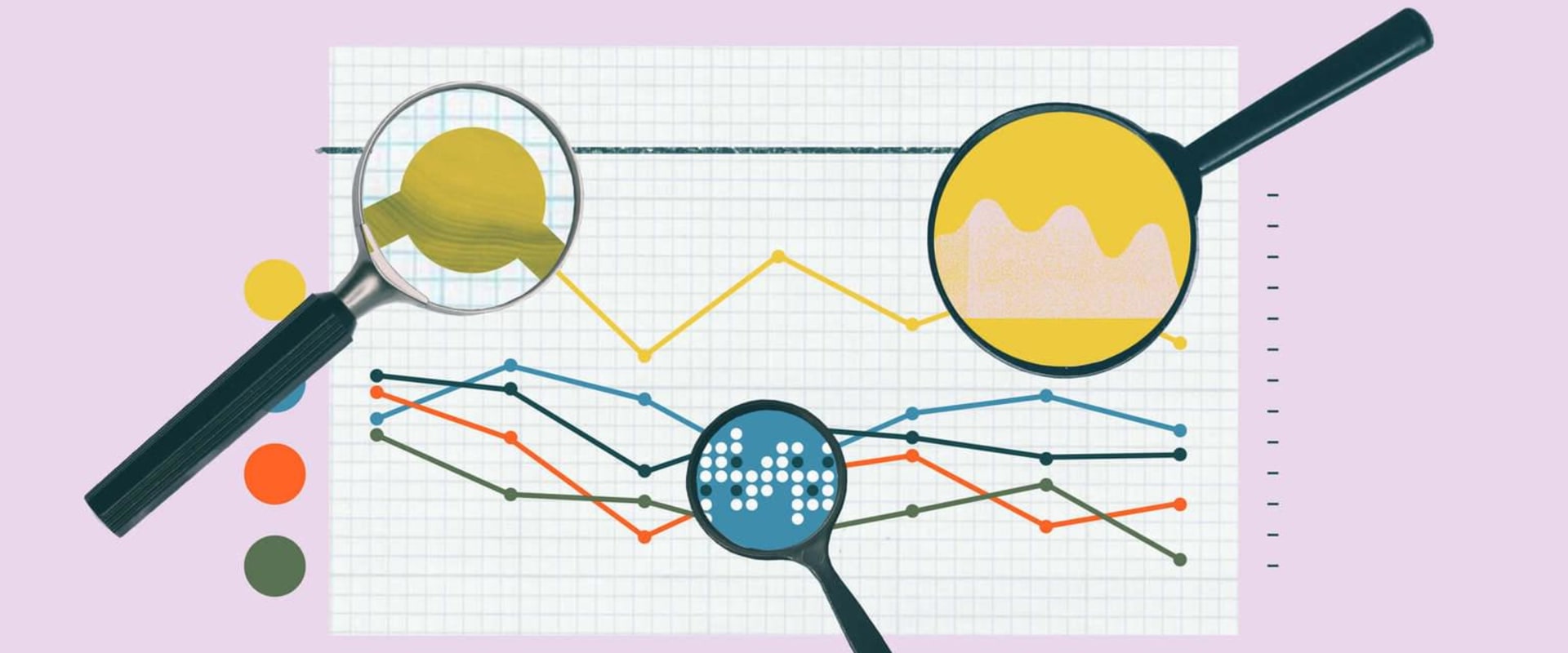Welcome to our article on analyzing customer data for insights! As businesses continue to grow and evolve, the importance of understanding customer behavior and preferences becomes crucial. By analyzing customer data, companies can gain valuable insights that can help improve their CRM strategy and overall business success. In today's fast-paced and competitive market, having a data-driven approach is essential for staying ahead of the game. In this article, we will delve into the world of CRM analytics and data analysis, exploring how these techniques can provide valuable insights for businesses.
So, whether you're a small startup or a large corporation, read on to discover the power of analyzing customer data for improving your CRM strategy. In today's competitive business landscape, customer relationship management (CRM) is crucial for success. But simply having a CRM system in place is not enough. To truly make the most out of your CRM, you need to analyze customer data for insights that can improve your strategy and processes. By understanding your customers better, you can tailor your strategies and processes to meet their needs and preferences, ultimately leading to higher satisfaction and retention rates. So why is analyzing customer data so important for your CRM strategy? Firstly, it allows you to gain valuable insights into your customers' behaviors, preferences, and needs.
This information can help you identify patterns and trends, which can then be used to develop targeted marketing campaigns, personalized messaging, and better customer experiences. By leveraging data insights, you can also identify potential areas for improvement in your current processes and strategies. But where do you start with analyzing customer data? Thankfully, there are various tools and software available specifically designed for this purpose. From simple data visualization tools to advanced analytics platforms, there is a solution out there to fit your business needs. It's essential to choose a tool that not only fits your budget but also provides the features and capabilities that align with your data analysis goals. Once you have selected the right tool for your business, successful implementation and training are crucial.
It's essential to involve all relevant team members in the training process to ensure everyone is on the same page. Additionally, it's crucial to establish clear goals and objectives for data analysis and regularly review progress to ensure you are on track. But analyzing customer data isn't just about gaining insights; it's also about optimizing your current CRM system. By leveraging data insights, you can identify areas for improvement within your CRM and make necessary adjustments to enhance its effectiveness. For example, if you notice a particular segment of customers is consistently dissatisfied with a particular aspect of your product or service, you can use this information to make targeted improvements and increase overall satisfaction rates. Furthermore, integrating your CRM with other business processes can also lead to significant benefits.
By connecting your CRM with your sales, marketing, and customer service departments, you can gain a holistic view of your customers and their interactions with your business. This integration can help streamline processes, improve communication, and enhance the overall customer experience. In conclusion, analyzing customer data for insights is a crucial component of any successful CRM strategy. By understanding your customers better and leveraging data insights, you can tailor your processes and strategies to meet their needs and preferences. With the right tools, successful implementation, and integration with other business processes, you can take your CRM strategy to the next level and achieve even greater success.
Choosing the Best Tools and Software for Analyzing Customer Data
use HTML structure with only for main keywords and for paragraphs, do not use "newline character"Why Analyzing Customer Data is Crucial for Your CRM Strategy
In today's competitive business landscape, customer relationship management (CRM) is crucial for success.Here's why analyzing customer data is crucial for your CRM strategy.
Optimizing Your Current CRM System with Data Insights
With the ever-growing amount of data available, businesses now have the opportunity to optimize their current CRM systems with valuable insights. By leveraging data analysis and reporting, you can make the most out of your existing resources and improve your CRM strategy. One way to optimize your CRM system is by identifying patterns and trends in customer data. By analyzing customer interactions, purchase history, and feedback, you can gain valuable insights into what drives customer behavior and preferences. This information can then be used to tailor your marketing efforts and improve customer satisfaction. Another way to optimize your CRM system is by using predictive analytics.By analyzing past data, you can predict future customer behavior and anticipate their needs. This allows you to proactively address any potential issues and provide personalized experiences for your customers. Furthermore, data insights can help you identify areas for improvement in your current CRM processes. By analyzing data on response times, customer complaints, and overall satisfaction, you can pinpoint any bottlenecks or inefficiencies in your system and make the necessary changes. In conclusion, optimizing your current CRM system with data insights is crucial for staying competitive in today's business landscape. By utilizing data analysis and reporting, you can make informed decisions and improve your overall CRM strategy.
So don't let your valuable customer data go to waste - use it to your advantage and see the positive impact it can have on your business.
Integrating Your CRM with Other Business Processes
Integrating your CRM with other business processes can greatly enhance your overall strategy. By connecting your CRM system with other important areas of your business, such as sales, marketing, and customer service, you can gain a more comprehensive view of your customers and their interactions with your company. This integration allows for seamless data sharing and analysis, providing you with valuable insights on customer behavior and preferences. For example, by combining sales data from your CRM with marketing data, you can determine which campaigns are most effective in converting leads into customers. This information can then be used to refine your marketing strategies and improve your overall conversion rates. Additionally, integrating your CRM with other business processes can improve efficiency and productivity.With all of your data in one centralized location, you can eliminate the need for manual data entry and reduce the risk of errors. This frees up time for your team to focus on more important tasks, such as building relationships with customers. Overall, integrating your CRM with other business processes is essential for gaining a holistic understanding of your customers and improving your CRM strategy. It allows you to make data-driven decisions and streamline operations, ultimately leading to better customer experiences and increased business success.
Tips for Successful Implementation and Training
In order to make the most out of your CRM strategy, it is important to successfully implement and train your team on using customer data insights. This can be achieved through the following tips:1.Define your objectives: Before diving into the data, it is important to clearly define your objectives and what you hope to achieve through analyzing customer data.This will help guide your analysis and ensure that you are focused on relevant insights.
2.Choose the right tools:
There are various tools available for analyzing customer data, such as CRM software, data analytics platforms, and data visualization tools. It is important to choose the right tool that aligns with your objectives and is user-friendly for your team.3.Train your team:
Once you have chosen the right tools, it is crucial to provide proper training to your team on how to use them effectively. This will ensure that everyone is on the same page and able to utilize the insights gathered from customer data.4.Monitor and track progress:
It is important to regularly monitor and track the progress of your CRM strategy using the insights gained from customer data. This will help identify any areas that may need improvement and allow for adjustments to be made accordingly.5.Encourage collaboration:
Customer data analysis should not be limited to just one team or department.Encourage collaboration between different teams to gain a holistic view of customer behavior and preferences, which can lead to more effective strategies.
6.Keep up with best practices:
With technology and data constantly evolving, it is important to stay updated on the latest best practices for analyzing customer data. This will ensure that your CRM strategy remains effective and relevant. By following these tips, you can successfully implement and train your team on using customer data insights to improve your CRM strategy. This will ultimately lead to better decision making, improved processes, and increased customer satisfaction. In conclusion, analyzing customer data for insights is a crucial aspect of improving your CRM strategy. By understanding your customers better, you can tailor your strategies and processes to meet their needs and preferences, ultimately leading to higher satisfaction and retention rates.We have covered everything from the importance of data analysis, to choosing the best tools and software, to successful implementation and training, to optimizing your current system and integrating it with other business processes. By following these tips and utilizing CRM analytics, you can take your customer relationship management to the next level.



